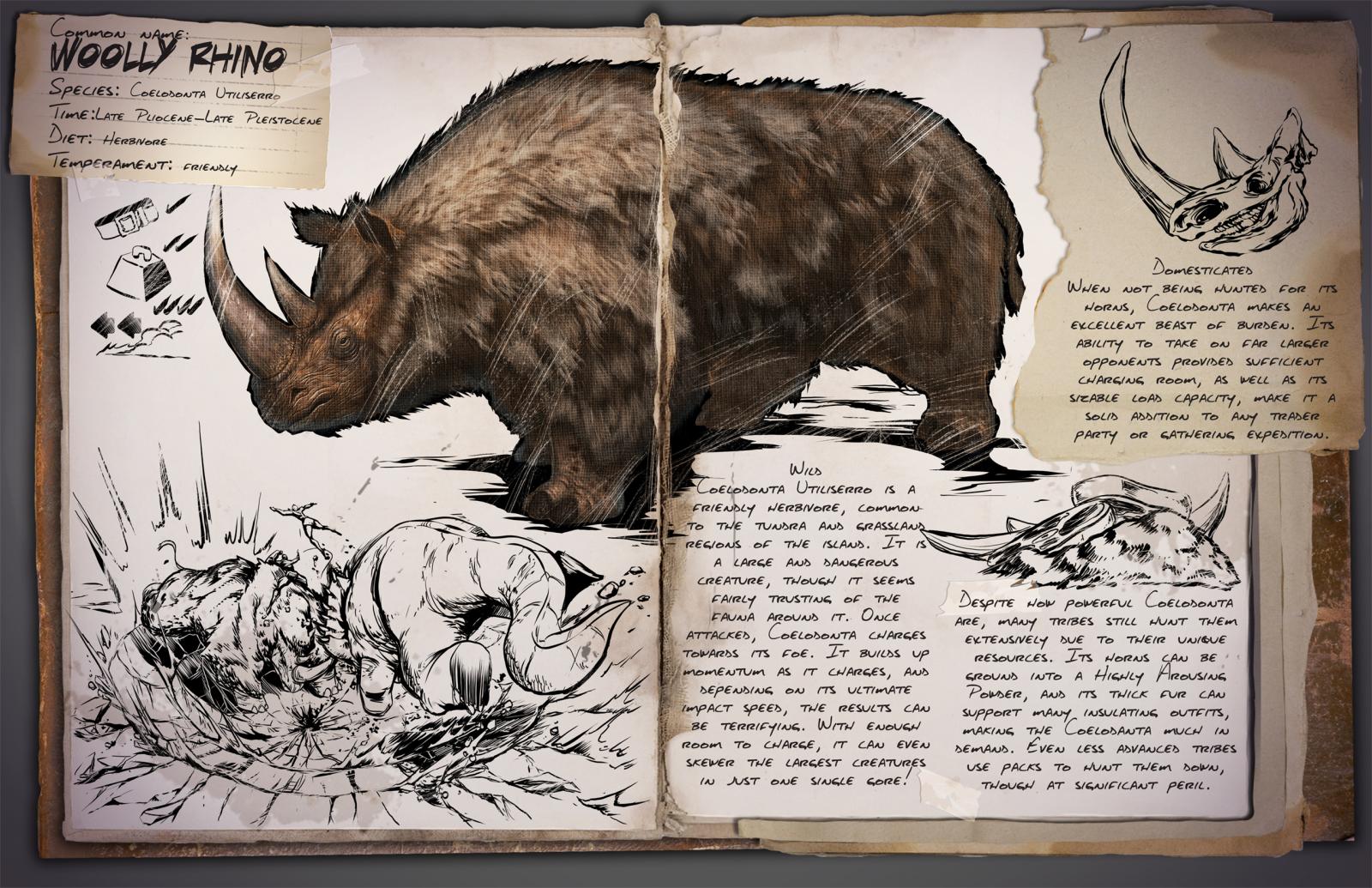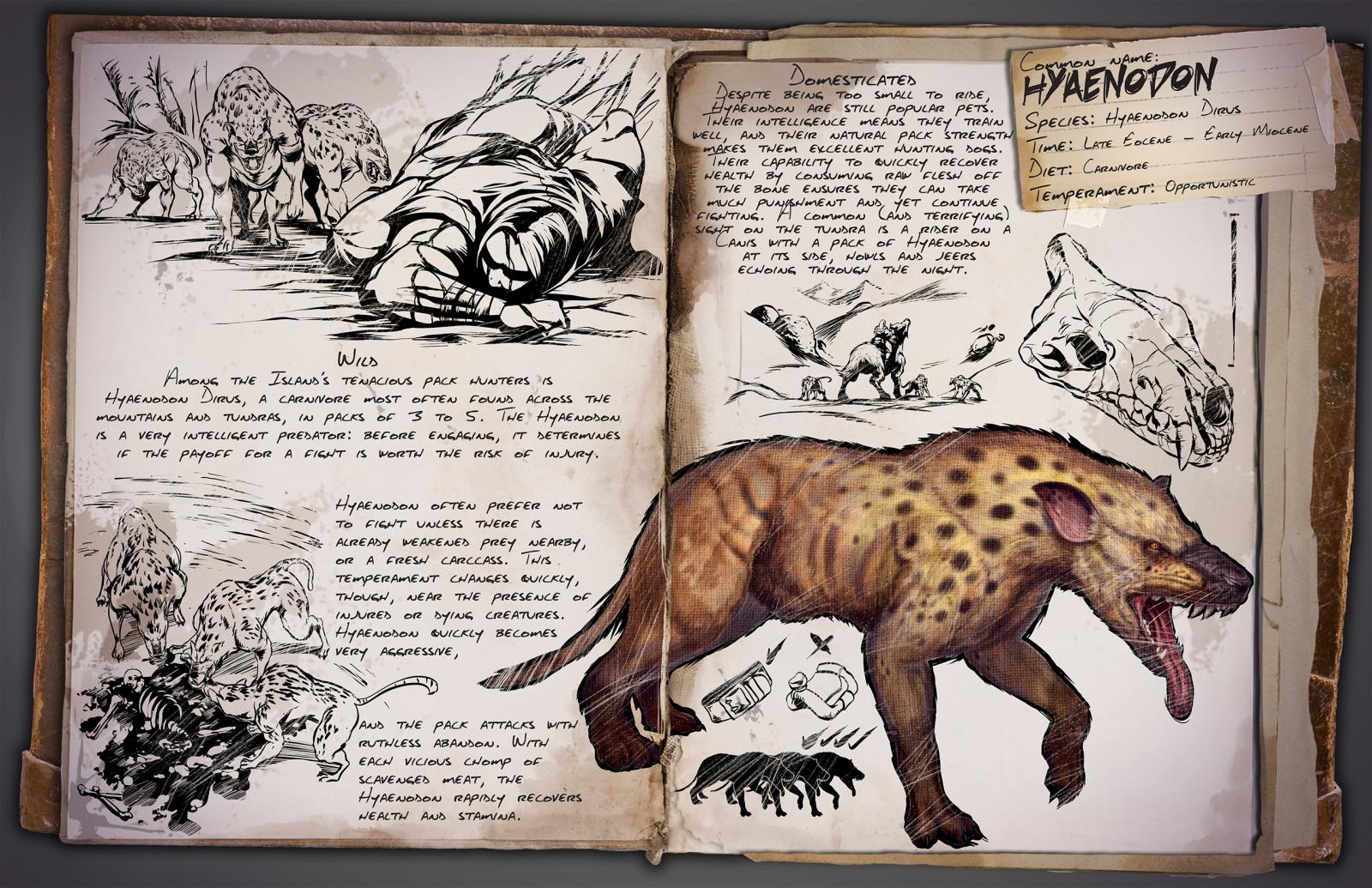
Common Name: Megalosaurus
Species: Megalosaurus Noctedominus
Time: Mid Jurassic
Diet: Carnivore
Temperament: Aggressive Nocturnal
Wild
Much like the Island’s other large theropods, Megalosaurus Noctedominus is an aggressive carnivore that should not be taken lightly. Unlike most of the other theropods, it is a primarily nocturnal creature. As dawn approaches, Megalosaurus begins looking for a secluded place to spend the day sleeping in relative safety.
Conversely, if disturbed during the day, Megalosaurus is significantly more sluggish. Either way, however, its primary combat tactic is to bite onto its target then lock its jaws shut in an iron-strength grip.
Only larger creatures can hope to break free once Megalosaurus locks its jaw. The creature then proceeds to gnaw on its prey until death. It’s a terrifying, grisly spectacle to watch, and a formidable tactic for a tribe to employ against more nimble opponents.
Domesticated
While Megalosaurus is not the most powerful theropod, it is still highly sought after by night-raiders. Due to its nocturnal nature, Megalosaurus becomes much more formidable at night – dodging attacks, conserving stamina, and attacking more accurately, to name a few of its enhanced talents.

Common Name: Thylacoleo
Species: Thylacoleo Furtimorsus
Time: Late Pliocene - Late Pleistocene
Diet: Carnivore
Temperament: Aggressive
Wild
Thylacoleo Furtimorsus is a large, powerful marsupial that can often be found hunting around trees. Its long claws and semi-opposable digits make it an apt climber, a quality that Thylacoleo uses to its advantage while hunting. It clambers up trees and waits to ambush passing prey by pouncing upon them. When something that large jumps onto a target, it becomes stunned and doesn’t stand much chance.
Thylacoleo’s most notable fighting quality is its powerful jaws. Once it bites its prey, it locks its jaw in an iron-strength grip that can hold most smaller creatures in place. Thylacoleo then goes on to savage its prey with its sharp claws. If it needs to escape a fight, Thylacoleo uses its muscular hind legs to jump back to safety among the trees.
Domesticated
Thylacoleo is a moderately strong mount, and its ability to climb trees and jump long distances makes it useful for traversal such that developing tribes often tame it. Small raiding parties particularly favor Thylacoleo, as it is well suited to ambushes and unfair fights.

Common Name: Troodon
Species: Troodon Magnanimus
Time: Late Cretaceous
Diet: Carnivore
Temperament: Nocturnally Aggressive
Wild:
Quite possibly the most intelligent non-human creature on the island, Troodon Magnanimus is an incredibly fast learner. It understands meaningful experiences much more quickly than other creatures (including humans), and its social nature means it also teaches its packmates, making them more clever too.
If Troodon’s cleverness didn’t make it formidable, than its tactics and biology do. It specifically pack-hunts at night when we are most vulnerable, and sees humans as its primary prey. This audacity is made especially dangerous due to its serrated fangs’ poison, which drains stamina from any creature, but outright paralyses humans.
Thankfully, Troodon is fairly small. Were it larger, it might well have become the dominant creature of its ecosystem.
Domesticated:
I thought Troodon simply could not be tamed, until I finally saw a lone survivor with one. She told me that she let “Troody” hunt a few of her tribe’s smaller creatures for sport, and it eventually started following her everywhere. It seems that while Troodon is too intelligent to fall for the rote conditioning of ‘tranq-and-feed’, it can instead gradually gain loyalty from a social approach that provides it the opportunity to hunt. Ever since, I have wondered at the benefits that a pack of ultra-smart, bred-for-battle Troodon may bring to a tribe brave enough to earn the favor of these clever carnivores.

Common Name: Woolly Rhino
Species: Coelodonta Utiliserro
Time: Late Pliocene - Late Pleistocene
Diet: Herbivore
Temperament: Friendly
Wild
Coelodonta Utiliserro is a friendly herbivore, common to the tundra and grassland regions of the island. It is a large and dangerous creature, though it seems fairly trusting of the fauna around it. Once attacked, Coelodonta charges towards its foe. It builds up momentum as it charges, and depending on its ultimate impact speed, the results can be terrifying. With enough room to charge, it can even skewer the largest creatures in just one single gore!
Despite how powerful Coelodonta are, many tribes still hunt them extensively due to their unique resources. Its horns can be ground into a highly arousing powder, and its thick fur can support many insulating outfits, making the Coelodonta much in demand. Even less advanced tribes use packs to hunt them down, though at significant peril.
Domesticated
When not being hunted for its horns, Coelodonta makes an excellent beast of burden. Its ability to take on far larger opponents provided sufficient sizeable load capacity, make it a solid addition to any trader party or gathering expedition.

Common Name: Hyaenodon
Species: Hyaenodon Dirus
Time: Late Eocene - Early Miocene
Diet: Carnivore
Temperament: Opportunistic
Wild
Among the Island’s tenacious pack hunters is Hyaenodon Dirus, a carnivore most often found across the mountains and tundras, in packs of 3 to 5. The Hyaenodon is a very intelligent predator: before engaging, it determines if the payoff for a fight is worth the risk of injury.
Hyaenodon often prefer not to fight unless there is already weakened prey nearby, or a fresh carcass. This temperament changes quickly, thought, near the presence of injured or dying creatures. Hyaenodon quickly becomes very aggressive, and the pack attacks with ruthless abandon. With each vicious chomp of scavenged meat, the Hyaenodon rapidly recovers health and stamina.
Domesticated
Despite being too small to ride, Hyaenodon are still popular pets. Their intelligence means they train well, and their natural pack strength makes them excellent hunting dogs. Their capability to quickly recover health by consuming raw flesh off the bone ensures they can take much punishment and yet continue fighting. A common (and terrifying) sight on the tundra is a rider on a canis with a pack of Hyaenodon at it’s side, howls and jeers echoing through the night.
.jpg.4f840ae1d657b21370c5b32587c4d891.jpg)
Common Name: Megalania
Species: Megalania Muruspede
Time: Late Holocene
Diet: Carnivore
Temperament: Aggressive
Wild
Megalania Muruspede is among the largest creatures found throughout the island’s complicated cave networks. Reaching up to three meters long, it can traverse vertically up the cave walls with little difficulty, using its claws as iron-strength grips. Fortunately, Megalania’s size means it is unlikely to sneak up on anyone. Unfortunately for spelunkers, it is an aggressive and dangerous creature nonetheless.
Like other Varanidae, Megalania is a venomous creature… Its poison is slow-acting, but will drain the victim’s effective strength and health until death unless cured by a rare antidote. That said, the Megalania’s prey are usually ripped apart well before they succumb to the poison’s long-term effects.
Domesticated
The extremely rare ability of Megalania to effortlessly climb walls makes it a highly sought after mount. While it is by no means the fastest, strongest, or toughest mount – the way it can effortlessly climb in the caves and scale mountains means it will always have a place in any advanced tribe’s stables.